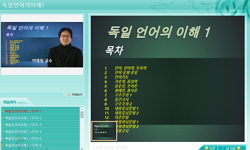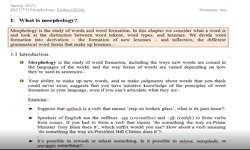대호는 기본적으로 50cm 이상이며, 기벽이 0.7cm 이상으로 단경호나 장경호에 비해 두껍다. 색조는 주로 (암)청색이고 속심은 자색을 띠며 타날을 한 뒤 회전물손질로 깨끗하게 지운다. 특히, ...
http://chineseinput.net/에서 pinyin(병음)방식으로 중국어를 변환할 수 있습니다.
변환된 중국어를 복사하여 사용하시면 됩니다.
- 中文 을 입력하시려면 zhongwen을 입력하시고 space를누르시면됩니다.
- 北京 을 입력하시려면 beijing을 입력하시고 space를 누르시면 됩니다.

5世紀代 釜山地域 墳墓出土 大壺의 副葬樣相과 意味 = Study on the burial aspect large-sized jar excavated in the tomb of the 5th centuries, Busan region.
한글로보기https://www.riss.kr/link?id=A106184377
- 저자
- 발행기관
- 학술지명
- 권호사항
-
발행연도
2018
-
작성언어
-
-
주제어
5세기 ; 부산지역 ; 신식도질토기 ; 분묘출토 ; 부장양상 ; 대호 ; 유형분류 ; 5th centuries ; busan region ; New-stlye pottery ; excavated in the tomb ; burial aspect ; large-sized jar ; typology
-
KDC
900
-
등재정보
KCI등재
-
자료형태
학술저널
-
수록면
21-45(25쪽)
- DOI식별코드
- 제공처
-
0
상세조회 -
0
다운로드
부가정보
국문 초록 (Abstract)
대호는 기본적으로 50cm 이상이며, 기벽이 0.7cm 이상으로 단경호나 장경호에 비해 두껍다. 색조는 주로 (암)청색이고 속심은 자색을 띠며 타날을 한 뒤 회전물손질로 깨끗하게 지운다. 특히, 기대 위에 얹혀서 부장되는 장경호·단경호와는 달리 대호는 피장자의 발치에 구덩이를 파서 안치되어 장경호·단경호 등 他 壺類와는 다른 부장양상을 확인할 수 있었으며, 이에 착안하여 장경호·단경호와 대호를 구분하는 기준을 마련하였다. 부곽이나 피장자의 발치에 구덩이를 파서 대호를 안치하는 습속은 전대의 고식도질토기단계부터 이어져온 부산지역 고유의 매장방식이다. 5세기 전반대에 일시적으로 확인되지 않으나 복천동39호분 등 대형분을 중심으로 그 습속이 다시 이어지며 6세기를 전후한 시점에 사라진다. 이는 5세기 2/4분기 후반대부터 부산 식고배를 지속적으로 창출해내며, 호류를 기대에 얹어서 대량으로 부장하는‘부산식 기종조합’의 존속기간과도 일치한다. 즉,‘부산식 기종조합’이 의연히 傳承되는 5세기대의 부산지역은 타지역 토기양식과는 차별화 된 신식도질토기문화를 공유하고 있다는 것을 확인할 수 있었다.
다국어 초록 (Multilingual Abstract)
Basically, The large-sized jar is larger than 50cm and thicker than 0.7cm, which is thicker than short-necked jar and long-necked jar. The color tone of large-sized jar is mainly (dark) blue, and internal component is purple, and it was cleared turnin...
Basically, The large-sized jar is larger than 50cm and thicker than 0.7cm, which is thicker than short-necked jar and long-necked jar. The color tone of large-sized jar is mainly (dark) blue, and internal component is purple, and it was cleared turning after paddle and anvil. Especially, the large-sized jars burial custo m is different from long-necked jar · short-necked jar. The unique burial custom in Busan region were found such as Busan-style mounted dishes, the combination of pottery stand and jar, and large-sized jars around feet in large tombs. Based on this, large-sized jars and long-necked jar · short-necked jar are distinguished from each other. The tradition that dig a hole at the feet of the buried person and set the large-sized jar is unique to the Busan area that has continued from the former early-stlye pottery stage. Although it was temporarily disappearing in the first quarter of the 5th century, and the tradition continues again as Bokcheon-dong tombs No.39, etc. The tradition is finally disappearing around the 6th century. In the late second quarter of the 5th century, the unique burial custom in Busan region were found such as Busan-style mounted dishes, the combination of pottery stand and jar, large-sized jars around feet in Bokcheon-dong tombs. In other words, Busan region, which has traditional combination of “Busan style pottery was found to have different pottery styles from other regions.
목차 (Table of Contents)
- Ⅰ. 序言 Ⅱ. 遺物의 檢討 Ⅲ. 類型分類와 編年 Ⅳ. 大壺의 副葬樣相과 意味 Ⅴ. 結語
- Ⅰ. 序言 Ⅱ. 遺物의 檢討 Ⅲ. 類型分類와 編年 Ⅳ. 大壺의 副葬樣相과 意味 Ⅴ. 結語
동일학술지(권/호) 다른 논문
-
- 부산고고학회
- 이현우
- 2018
- KCI등재
-
- 부산고고학회
- 李鉉宇(Lee, Hyun woo)
- 2018
- KCI등재
-
- 부산고고학회
- 김헌석(Kim, Hun Suk)
- 2018
- KCI등재




 KCI
KCI 스콜라
스콜라




